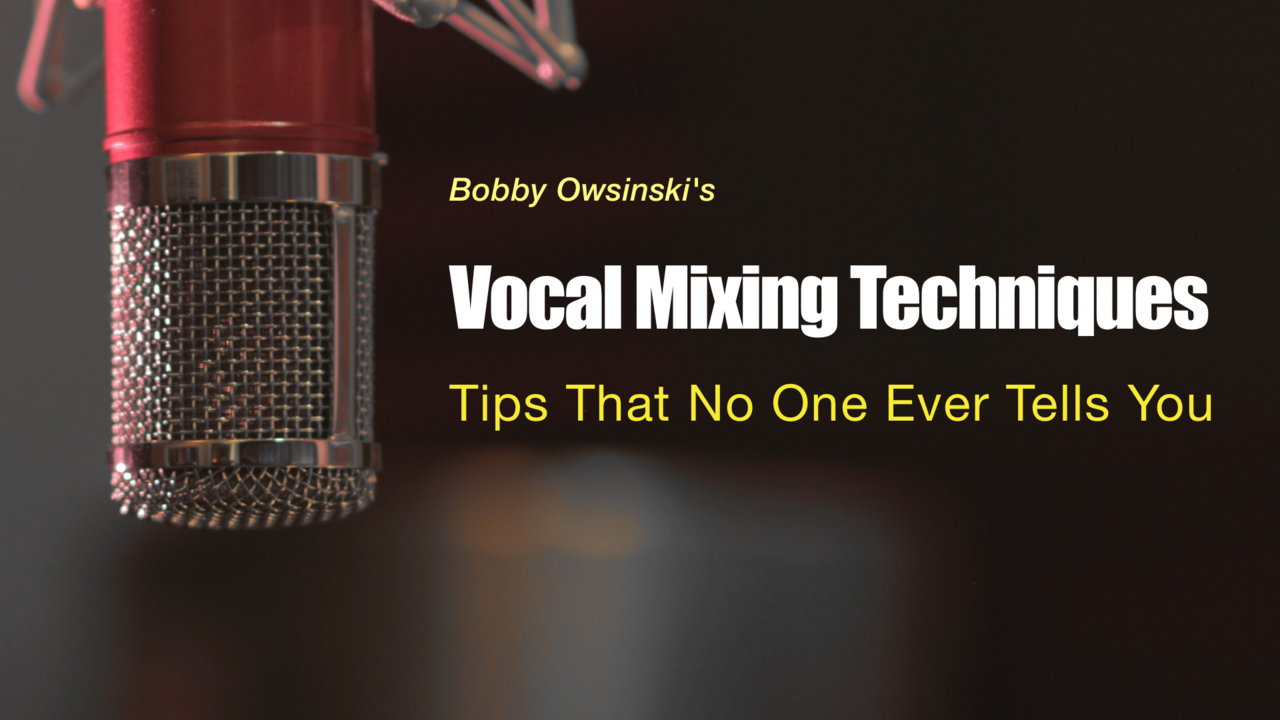
Vocal Mixing Techniques
Give Your Vocals That Major Label Sound
I used to be really frustrated trying to get a vocal sound. I'd work for hours trying to get it to fit into the mix or get the right sound and always seemed to be chasing my tail.
I finally gave up experimenting and went to some of my Los Angeles A-list engineer friends - people that have had hundreds of gold and platinum records (and more than 30 Grammy's) between them - and asked them flat out, "What am I doing wrong here?"
What I got was a series of tips and techniques that were so simple and logical that I thought, "Why don't more people know about this?"
Now I've compiled the best of those techniques into a short course simply called Vocal Mixing Techniques.
If you have questions about your mix like:
- Why doesn't the EQ that I put on the vocal make it sound better?
- Am I compressing the vocal the right way for the song?
- How can I cover up that pitchy vocal track?
- How can I give the vocal some ambience, yet not make it sound effected?
...then this course is for you.
Each one of these questions and a lot more are addressed in the course, plus I'll also show you some excellent techniques for background vocals that you can use right away as well, such as:
- The best way to pan background vocals (especially when there are lots of layers) so they don't get in the way of the lead
- How to make thin background vocals sound bigger and beefier.

Plus, there's more!
As a bonus, I’ve also included several excellent vocal recording techniques as well. These are designed to help you not only get the best performance out of a singer, but keep it consistent so it's easy to mix as well.
AND, I've also included a downloadable PDF summary for all of the above techniques so that you can easily refer to them the next time you’re doing a session.
